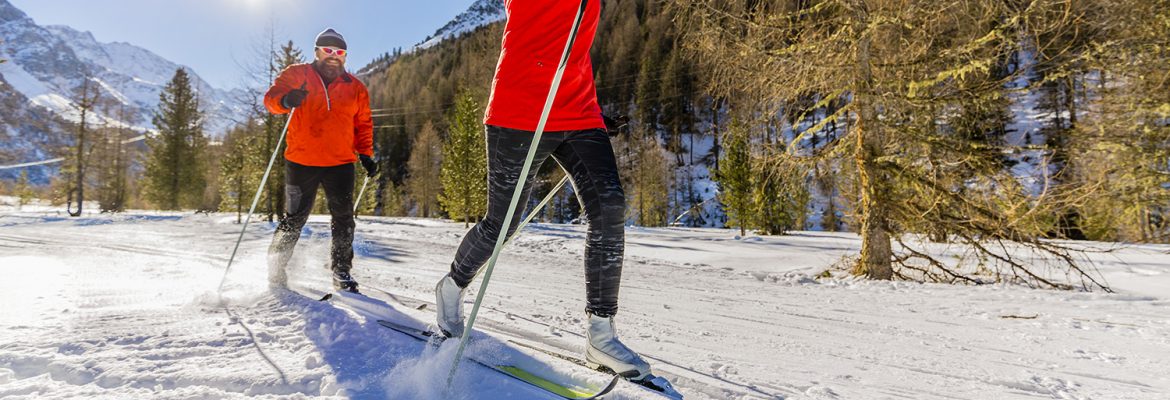
It might be the best outdoor aerobic activity that’s exclusive to winter. If you’re ever wondering what to do in Blue Mountain in winter, it’s also a great way to explore the area in ways that you can’t do at any other time of year. But if you don’t know what to wear for cross-country skiing, you might not fully enjoy all it has to offer.
Dressing for Cross-Country Skiing Versus Other Winter Activities
Also known as Nordic skiing, cross-country skiing requires a different approach to the clothing you wear versus other outdoor activities in the winter, like downhill skiing and snowmobiling. The vigorous activity means you need clothing that not only keeps you warm and dry but also doesn’t restrict your movement too much.
Here’s What to Wear When Cross-Country Skiing
The combination of different levels of exertion and the variety of weather conditions in which you might cross-country ski means you need to pay close attention to what you wear.
- Dress in Layers – The effort needed to cross-country ski can generate a lot of body heat. That means it’s crucial to dress in lighter layers of clothing instead of one or two heavy layers. Layering also lets you adjust your clothing as needed to remove or add layers as you ski.
The standard three-layer approach is a good place to begin. Wear a base layer, the one next to your body, that’s relatively tight fitting and moisture-wicking. The second layer is your insulating layer for warmth. A zip-up thermal fleece is a good second layer. The third layer should be a durable, water-repellent outer shell that is breathable. - For Your Head, Hands and Feet – Layering applies to other parts of your clothing too. To avoid cold hands, you can wear liner gloves covered by insulated ski gloves. On your feet, wool or synthetic socks will help keep them warm and dry and ski boots will work as the outer layer. On your head, you can use a light cap on warmer days and a wool or fleece thermal beanie in colder conditions.
- A Light Back Pack – It’s often difficult to predict how weather conditions and your levels of exertion will affect your body temperature and clothing requirements. If it’s a sunny, warm day, you’ll know to use lighter layers. But if you’re not sure, consider using a light backpack to carry extra layers that you might need or to store layers that you shed.
If you liked this post, check out our last article on why Blue Mountain is such a popular ski destination.




